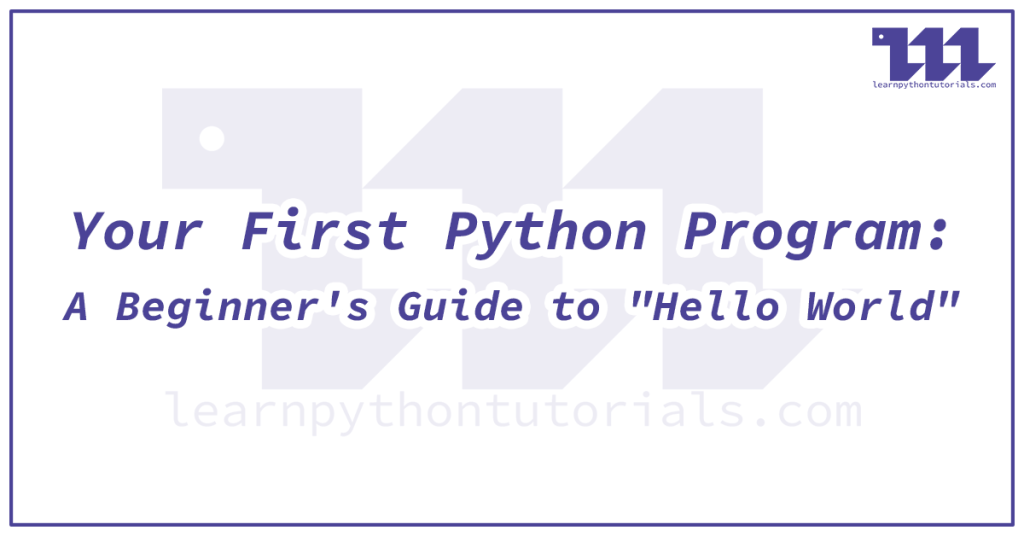Introduction
As you venture into the world of programming, your first step is often to write a simple program that displays the timeless message of “Hello, World!” This article serves as a beginner’s guide to creating your first Python program. By following along and understanding the basics, you’ll gain a solid foundation to explore the vast possibilities of Python programming.
Writing Your First Python Program – “Hello, World!”
To get started, follow these steps to create a Python program that prints the classic “Hello, World!” message:
Step 1: Install Python: Before diving into coding, ensure that Python is installed on your computer. Check our guide for setp by step intructions on installing Python on your computer.
Step 2: Launch a Text Editor: Python code is typically written in plain text files. Launch your preferred text editor or integrated development environment (IDE) to begin writing your program. Common choices include Sublime Text, Visual Studio Code, PyCharm, or IDLE (the default Python IDE).
Step 3: Write the Code: In your text editor, enter the following line of code:
print("Hello, World!")This line instructs Python to display the message “Hello, World!” on the screen. The print() function is used to output text or values in Python.
Step 4: Save and Execute the Program:
Save the file with a .py extension, such as hello_world.py. Choose a location on your computer where you can easily locate the file.
To run the program, open the command prompt (Windows) or the terminal (macOS/Linux) and navigate to the directory where the Python file is saved. Type python hello_world.py and hit Enter. Python will execute the program, and you should see the output “Hello, World!” displayed in the console.
Conclusion
Congratulations! You have successfully written and executed your first Python program, displaying the famous “Hello, World!” message. This simple exercise serves as a starting point for your Python journey, introducing you to the fundamental concepts of writing and running Python code.
From here, you can explore more advanced concepts, such as variables, control structures, functions, and object-oriented programming, to build more complex and exciting applications. Python’s versatility and extensive library ecosystem make it an excellent choice for web development, data analysis, machine learning, and much more.
Remember, practice is key to mastering programming. Experiment, explore, and build upon your newfound knowledge. Embrace challenges and seek additional resources like tutorials, books, and online communities to enhance your learning experience.
Now that you’ve conquered your first Python program, you’re ready to embark on a fascinating coding journey. Enjoy the process, stay curious, and keep honing your skills. Happy coding!

